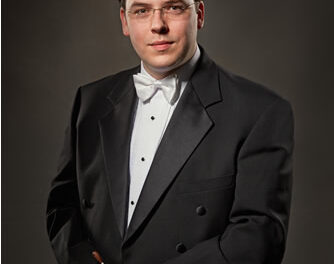At any time the Music House is populated with ten or a dozen keyboard instruments; for this concert the featured instruments were a forty-year old veteran of the Dowd Boston shop, a copy of a double keyboard Pascal Taskin, and a relatively newer instrument, unapologetically a Richard Kingston double in the French style. The Kingston, played by Elaine Funaro, was ranged crossways along a short wall, with the Dowd, played by Beverly Biggs, along the adjoining wall to the right, giving Funaro a clear line of sight to Biggs. Both instruments were in tune and in tune with each other. More importantly, both performers were in tune with each other, or in alignment or in communion, or whatever you please, making this a joyful and powerful performance.
The Dance Suite of 1705 by Gaspard Le Roux began with an Allemande (La Vauvert) with both instruments playing. The Gavotte en rondeau had its movements played in alternatim by the two instruments. This provided the audience with a good opportunity to compare and contrast the two instruments. The suite also includes a pair of minuets and a courante and terminal gigue.
The performers had compiled their own Suite des Oiseaux: Rameau’s “La Poule” and “Le Rappel des Oiseaux” and Couperin’s “Le Dodo ou L’amur au Berçeau.” Biggs took “La Poule,” registered very conventionally; Funaro chose to play “Le Rappel” on the very nasal four-foot register, one octave down. The contrast could not have been any more charming. Then Bigg’s best solo playing of the concert, “Le Dodo,” very tranquil.
A pairing of Louis Couperin’s unmeasured Prelude in D minor with François Couperin’s “L’Imperiale,” from Les Nations, proved very clearly that Funaro and Biggs, both outstanding on their own, made music bigger than the sum of the parts when playing together. Funaro’s canny ability to read the nuances of Biggs’s playing almost before a key was struck made the first movement, Vivement, incredibly clean. This was followed by a fine Légérement. The final Vivement was fugal; what fun to hear and see the subject being passed back and forth between the two players.
The wine tasting at intermission was notable especially for a McWilliams Cabernet Sauvignon and some delicious herbal mushroom and pastry canapés.
Intermission seemed to have disturbed the invisible rapport between the players, but only for a few measures at the beginning of “La La Poplinière” from Rameau’s Troisième Pièce de Clavecin en Concerts. The second movement, “La Timide” (Rondeau gracieux 1 & 2), was composed for the lower registers, so typically dark and distinctively French. The Tambourin 1 & 2 was very percussive, with impressive teamwork, a foretaste of Mozart’s “Alla Turca”; the double harpsichord sonority required no janissary stop.
To close, Funaro and Biggs tore off a handful of Joseph-Pancrace Royer (c.1705-1755). Biggs played a very gracious interpretation of an Allemande, typically French; the mordant-inflected bass notes were like dark raisins in a wheaten bun. Then forces combined for “La Marche des Scythes” (Scythians), a program piece; like Kuhnau’s Fight between David and Goliath or James Hewitt’s Battle of Trenton, it would have benefited by a superior and supercilious narrator. Somebody’s four-foot stop had by this time gone just the slightest bit out of tune, providing a little extra spice to this spicy composition of angry snarking soldiery. The arpeggios were worthy of Brandenburg V.
Biggs and Funaro seem made for each other. Their geographic proximity allows them lots of practice time together. Their apparent ability to read each other’s mind blends their playing into one homogeneous wave of exquisite sound











